Food Updates: From Parle-G to Pringles - Examining the Evidence on Ultra-Processed Foods
While ultra-processed foods (UPFs) may have inherent harms, the data is not all that clear and the arguments presuppose that people have access to fresh fruits and vegetables and cooking at home.

The Book - Kindle Version Now Available Worldwide
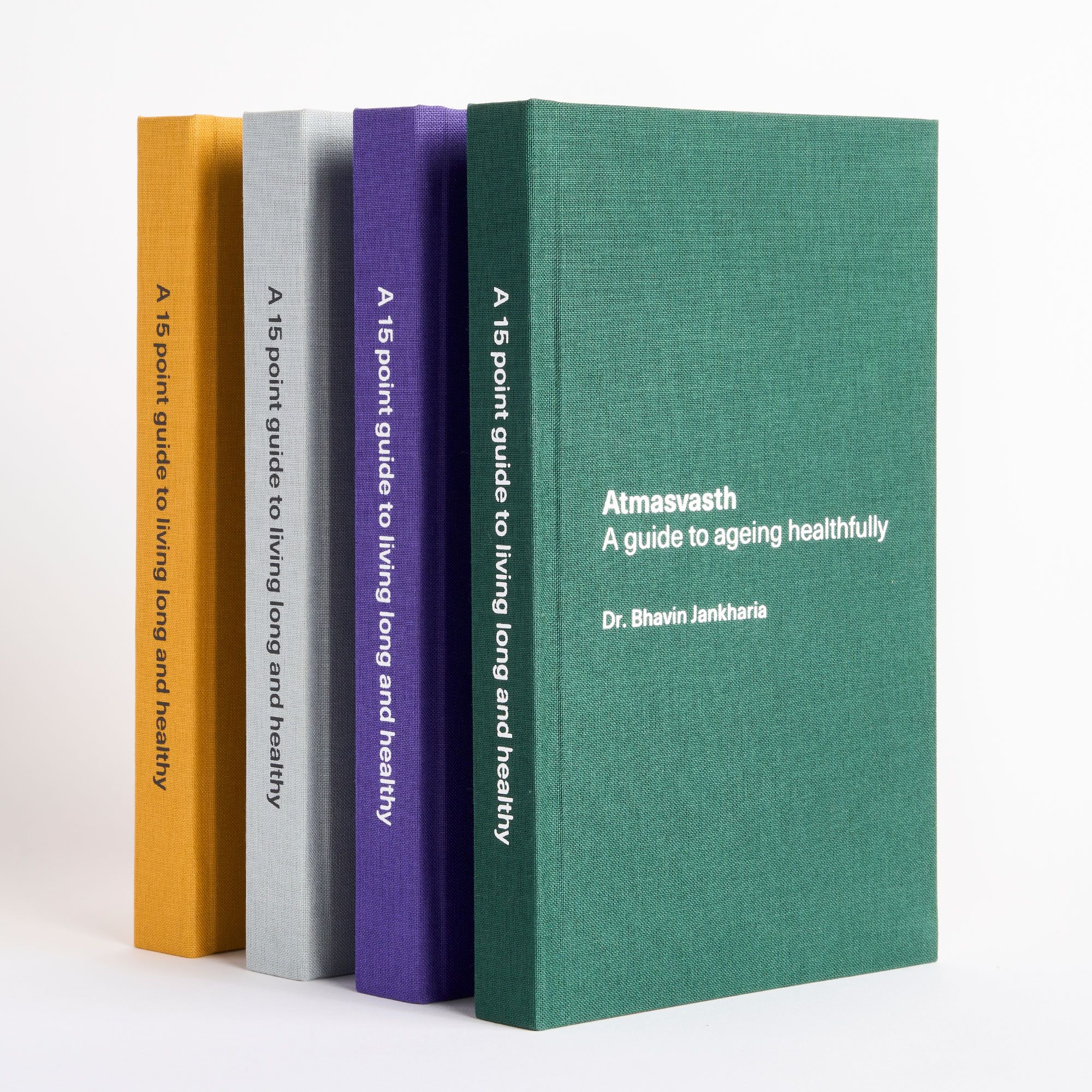
The Detailed 15-Point Guide to Live Long, Healthy
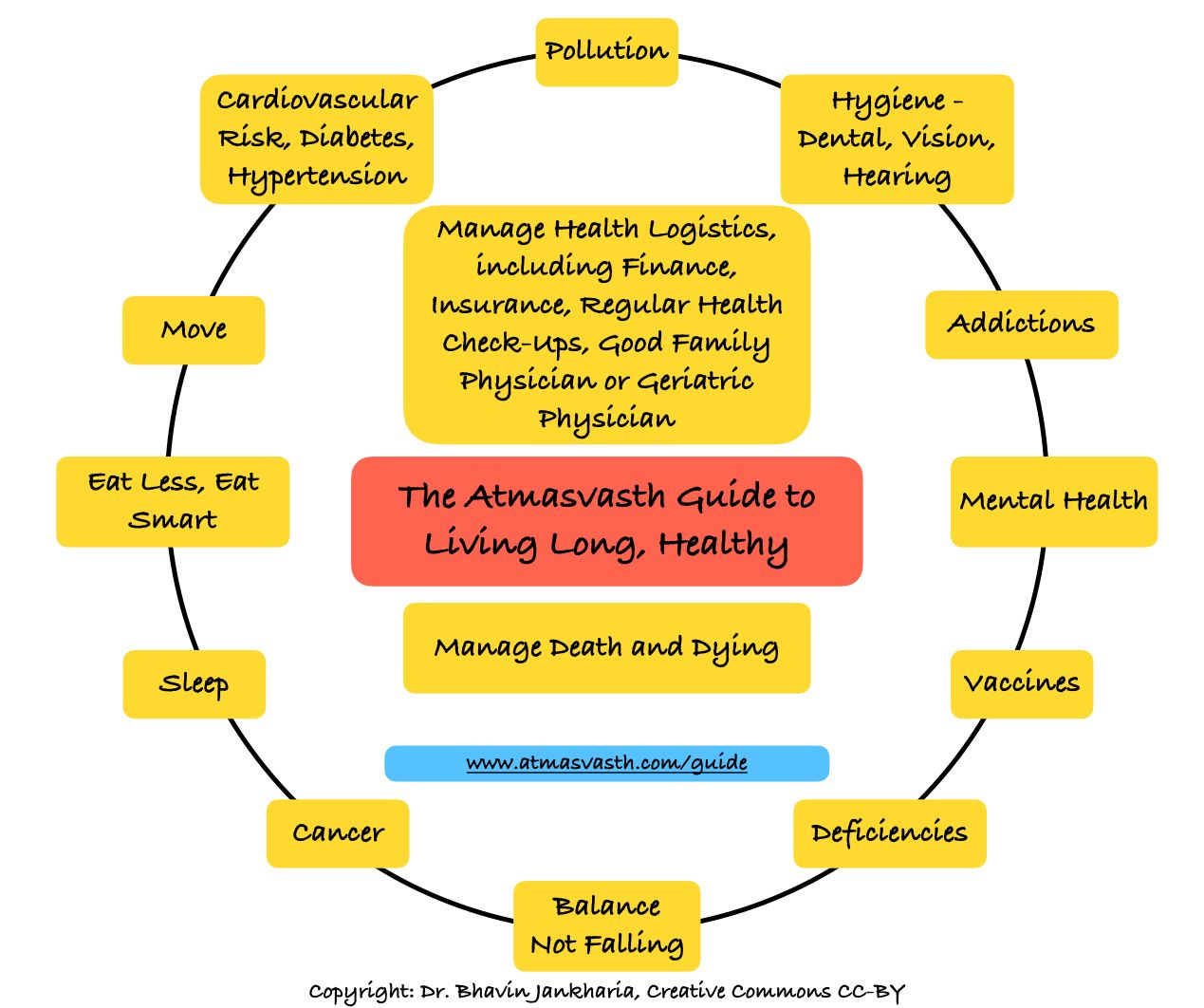
Audio
Video
The video is on YouTube.
Text
In my piece titled “A Potata Chip a Day…” in Mar 2021, I touched up on the concept of ultra-processed foods (UPFs) and the NOVA classification of UPFs with the understanding that the more processed a food item, the more harmful it is and that as a rule we should try and avoid eating anything that comes in a packet.
Let’s look at all the new data that has come in over the last 3 years on UPFs.
In 2022, there was a prospective Italian study [1] that looked at the nutritional score and the UPF NOVA score of the food habits of 272960 people and found that those with a higher UPF consumption had a higher risk of all-cause and cardiovascular mortality.
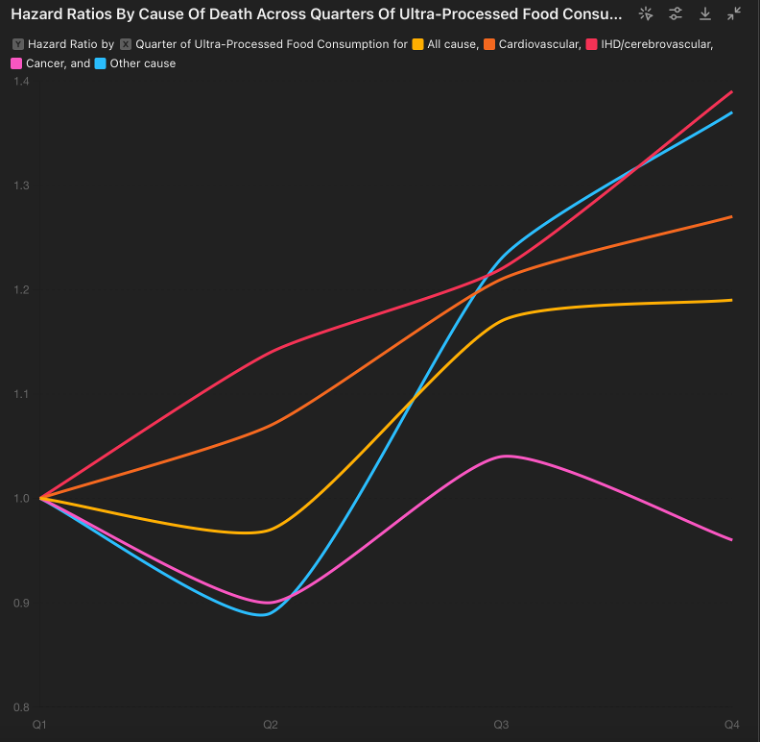
The cancer risk data in this study was contrary as you can see with the pink line, where those with the worst UPF consumption had a lower cancer risk, which then tells us that there is likely a lot of noise in the study.
Another study [2] by Kiara Chang and colleagues using the UK Biobank data found that the higher the UPF consumption, the higher is the overall risk of all cancers and specifically ovarian cancer, though for other cancers the risk and hazard ratio varied. Even this study shows a lot of noise where some cancers have a lower risk with higher UPF consumption, but overall there seems to be an increased risk of some cancers with higher UPF consumption.
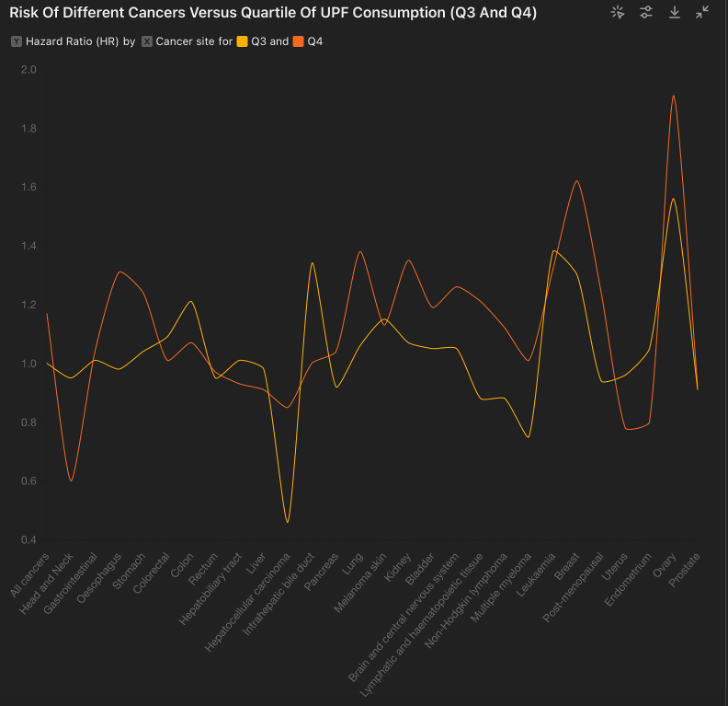
The EPIC cohort study [3] also looked at the different UPF groups and found that the higher the processed food component (Group 3 NOVA) but not Group 4 NOVA (ultra-processed food), the higher the risk of any cancer and some specific individual cancers, mainly head & neck cancers. However, there were a large number of assumptions and models and the increased risk wasn’t shown for most cancers…again a lot of noise.
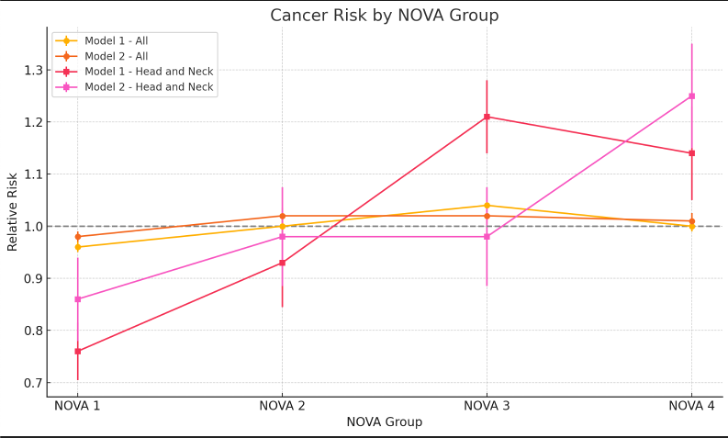
Another study from the NutriNet-Sante cohort led by Laury Sallem showed an increased risk of cardiovascular disease with the use of two emulsifier groups (total celluloses and total mono- and diglycerides of fatty acids) and four emulsifiers (E460, E466, E472b and E472c). These are used in processed foods to improve texture and increase shelf-life. The absolute risk is marginal.
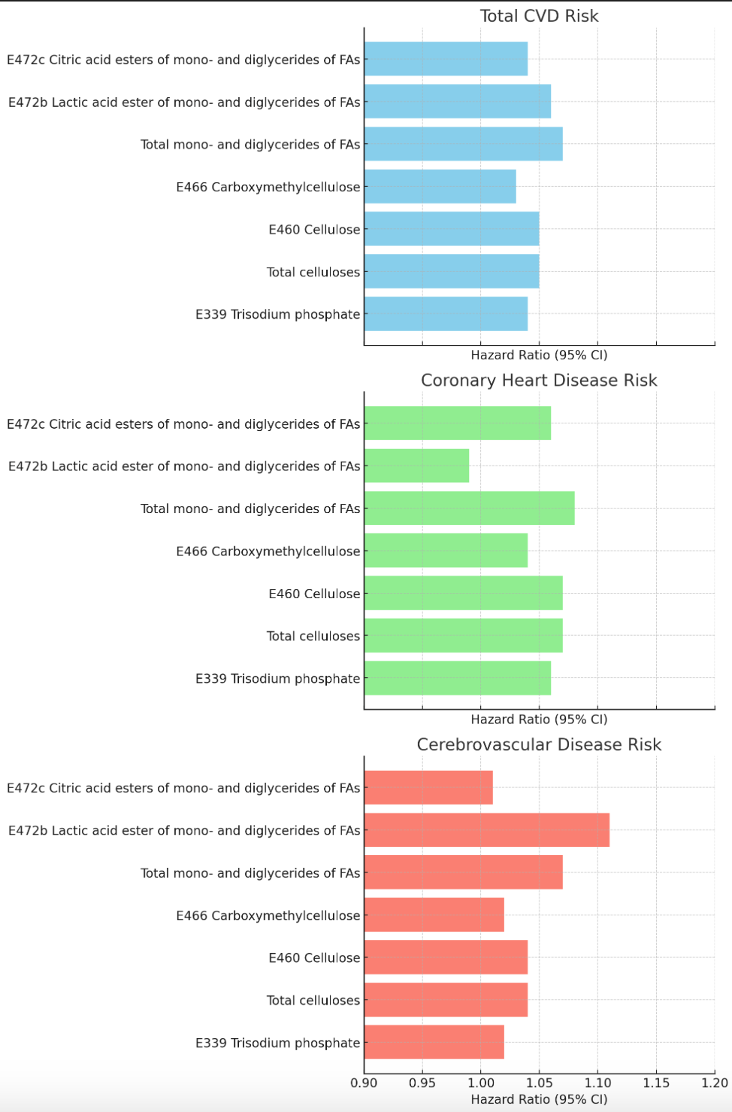
While the overall claim is that the higher the UPF group and the higher the UPF consumption, more adverse the health effects, the challenge is that the data is all very noisy and the absolute risk (as against relative risk) is small when we compare those who eat more UPFs than those who don’t. Reverse causation is not really accounted for in these studies, i.e. those who are healthy and educated perhaps eat less UPFs and those who are not, perhaps eat more UPFs.
The reality is a little bit more complex.
In India, it is easy if you have the resources and time and energy to eat only cooked food at home, prepared by a Maharaj or a cook or a stay-at-home cooking mother or wife. But not everyone has that luxury and if you have to eat out of packets, surely every packaged food can’t be harmful, simply because it uses preservatives to increase shelf-life!
A Parle-G packet of glucose biscuits is considered a Group 4 NOVA ultra-processed food and yet, it sustains a large number of people who don’t have the ability to pay for cooked food or to get other sources of nutrition in their daily lives. There was a time when these were considered essential nutrition (mothers would pack Parle-G biscuits in the lunch tiffins of their children) but today we try to belittle them because they supposedly cause obesity? A Parle-G biscuit dunked in tea eaten, just before it crumbles into the teacup is still a delight, or have we all forgotten this?
The extremes are easy to understand. Eating a McDonald’s burger every day, or eating only Parle-G biscuits for lunch and dinner every day will likely have adverse effects. We have to understand though our food choices are based on our cultural preferences, our overall food habits and the understanding that a sensible eating plan that doesn’t overdo anything is likely the best way to manage. And even then, physical activity trumps a so-called poor diet all the time.
If you are interested in the other side of the debate, I urge you to read Laura Thomas’ write-ups on UPFs - Parts I, II and III to get a better sense of the debate around classifying food items and then moralizing about them to make people feel guilty if they are eating out of packets.
I mentioned in my piece titled “Avocados, Olive Oil and Walnuts - Eating Healthy is for the Rich and Wealthy” in Apr 2022 that it is expensive to follow a so-called “healthy” food plan that the EAT-Lancet commission had come up in 2021. It is the hegemony of the rich, minority world that dictates what the poor, majority world has to consider healthy to eat. I will run through the Indian Nutrition Guidelines that were published recently to highlight some of this next week.
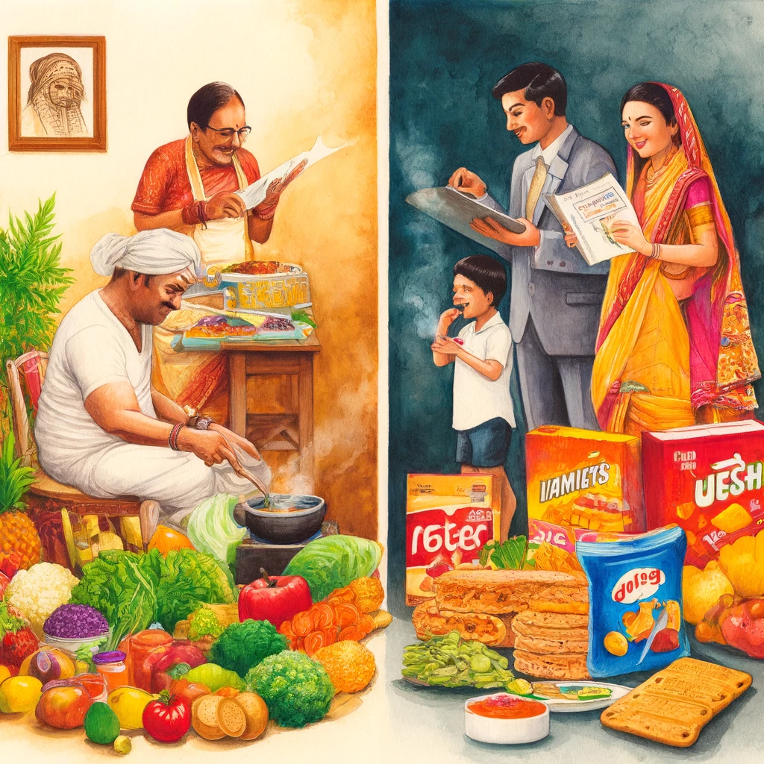
I wrote this in Apr 2021, “And if you are still confused about what constitutes a UPF, use the Michael Pollan rule “Don’t eat anything your great-great-great grandmother wouldn’t recognize as food”.” What I realize now that my great-great-great grandmother living in a small village in Saurashtra didn’t really have enough food and anything that came their way was welcome and if she had had access to refrigerators and packaged foods, she would have embraced them immediately.
What does this mean for you and I? Packaged foods are convenient and make life easy for us. It is not easy for everyone to go and buy vegetables and meat and fish and then prepare and chop and cook and then eat. Not all packaged food is bad, not all non-packaged food is good. Like with everything in life, moderation is the key. A packet of Lay’s or a box of Pringles every day would be detrimental, but so would eating 3500 calories every day of home-cooked food using vegetables and fruits and only so-called healthy items. Diets don’t work. What works is a sustainable sensible food plan without moralizing, without making you and I feel guilty about what and how much we are putting in my mouth…something that you have to work out for yourself with a little thought and understanding and respect for your own body and self.
And in the end it is about eating well to live long, healthy, not for achieving so-called acceptable body weight parameters.
Footnotes
1. Bonaccio M et al. Moli-sani Study Investigators. Joint association of food nutritional profile by Nutri-Score front-of-pack label and ultra-processed food intake with mortality: Moli-sani prospective cohort study. BMJ. 2022 Aug 31;378:e070688.
2. Chang K et al Ultra-processed food consumption, cancer risk and cancer mortality: a large-scale prospective analysis within the UK Biobank. EClinicalMedicine. 2023 Jan 31;56:101840.
3. Kliemann N et al. Food processing and cancer risk in Europe: results from the prospective EPIC cohort study. Lancet Planet Health. 2023 Mar;7(3):e219-e232.
4. Sellem L et al. Food additive emulsifiers and risk of cardiovascular disease in the NutriNet-Santé cohort: prospective cohort study. BMJ. 2023 Sep 6;382:e076058.
Atmasvasth Newsletter
Join the newsletter to receive the latest updates in your inbox.



